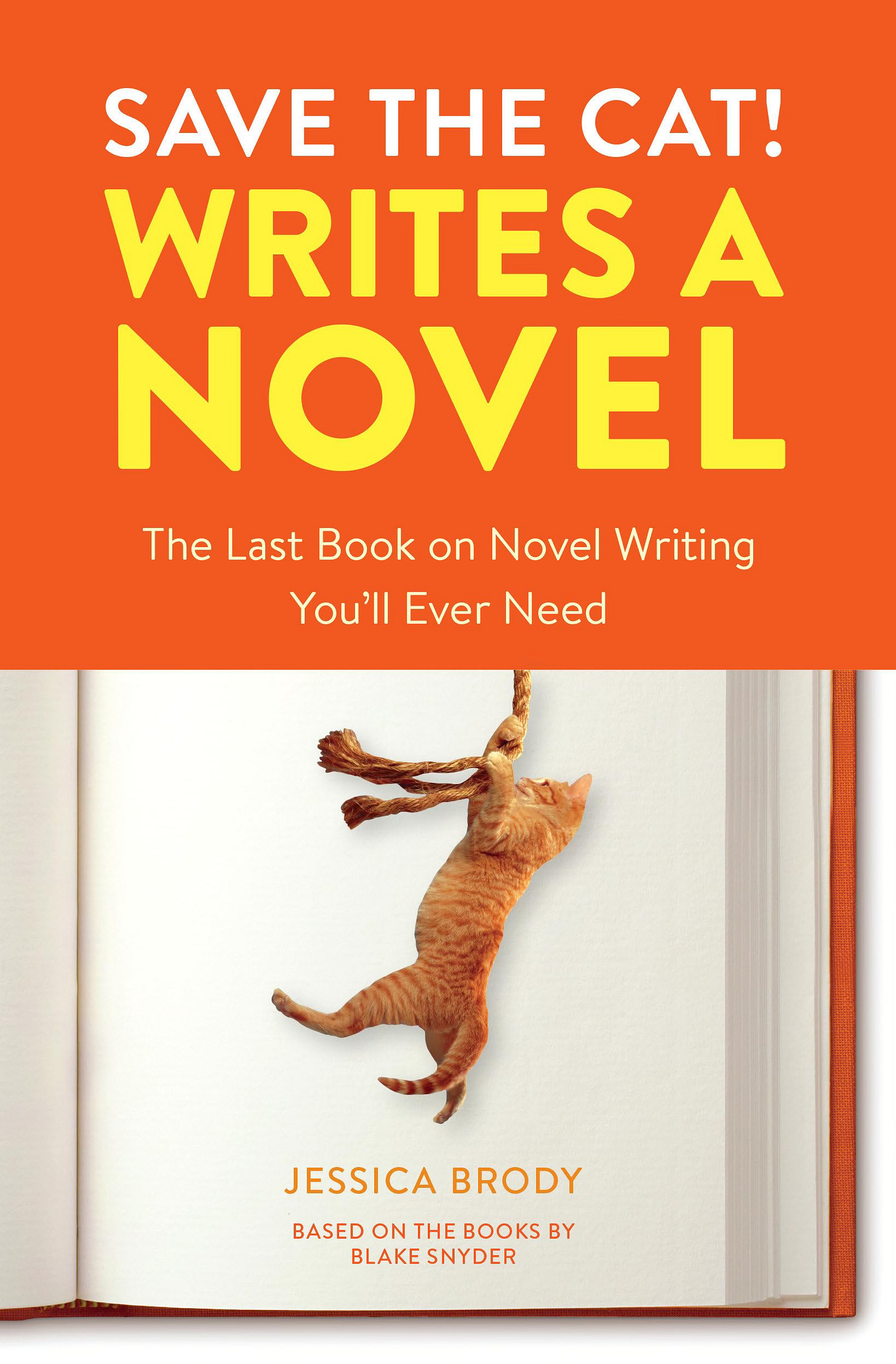Book of the Week: Save the Cat! Writes a Novel by Jessica Brody
Welcome to the second year of Book of the Week, where every Sunday, I recommend a book to support your writing career.
Keeping our promises to ourselves is essential.
Life of a Travel Writer
Join me on my journey as I help others craft their travel stories and explore the world! Currently writing "The Two-Year Sailor: One Woman, One Goal, Seven Continents."
January 20th, 2025
Hello, Fellow Readers, and Happy Sunday,
I hope you all have a wonderful weekend!
Book of the Week
When I first came across Save the Cat! Writes a Novel by Jessica Brody, I was skeptical. The subtitle, "The Last Book on Novel Writing You’ll Ever Need," felt like a bold claim. As someone who has spent years devouring books on writing and storytelling, I doubted it could teach me anything new. But curiosity got the better, and I decided to try it. What I discovered wasn’t necessarily groundbreaking information—but it was an incredibly effective framework for storytelling, one that I’ll return to.
This book isn’t just for novelists but anyone looking to improve their storytelling skills. Whether you’re crafting fiction, writing travel narratives, or even structuring blog posts, Brody’s 15-beat story structure is a game-changer. It simplifies the complexities of storytelling into digestible steps while emphasizing the importance of character development and thematic resonance.
Why Save the Cat! Stands Out
One of the standout features of this book is its practicality. Brody doesn’t just explain storytelling concepts—she shows you how to apply them with clear examples and exercises. Her breakdown of 15 essential story beats provides a roadmap for crafting engaging narratives that resonate with readers. These beats aren’t rigid rules but adaptable guidelines that help writers maintain momentum and avoid common pitfalls like sagging middles or rushed endings.
Another highlight is Brody’s focus on character-driven storytelling. She emphasizes that plot and character are inseparable—your protagonist’s growth should drive the narrative forward. This approach resonated deeply with me as a travel writer because, in my stories, the "character" is often myself or the people I meet along my journey. Learning to make these characters relatable and compelling has transformed how I tell my travel tales.
Breakdown of the 15-Beat Story Structure
Save the Cat! Writes a Novel by Jessica Brody introduces a structured approach to storytelling through its 15 essential story beats. Here’s a summary of each beat, providing a roadmap for crafting engaging narratives:
Opening Image (0-1%): This is the protagonist's initial snapshot of their world, showcasing their life before the story unfolds. It sets the tone and context for the character's journey.
Theme Stated (5%): A character (often not the protagonist) makes a statement that hints at the central theme or lesson the protagonist will learn by the end of the story.
Setup (1-10%): This section delves deeper into the protagonist's life, introducing supporting characters and revealing their flaws or challenges. It establishes what is at stake if the protagonist does not change.
Catalyst (10%): An inciting incident disrupts the protagonist's status quo, forcing them into a new situation or mindset—this could be a breakup, a death, or another significant event.
Debate (10-20%): The protagonist grapples with their options following the catalyst, often questioning whether to accept this new path or return to their old life. This beat highlights their reluctance to change.
Break Into 2 (20%): The protagonist embraces change and enters Act II, marking a shift into a new world or perspective.
B Story (22%): A secondary storyline is introduced, often involving a new character who will help the protagonist learn their lesson or theme.
Fun and Games (20-50%): This section showcases the protagonist navigating their new world, pursuing goals, and experiencing successes and failures—essentially delivering on the "promise of the premise."
Midpoint (50%): The story reaches its halfway point, often marked by a significant event that leads to either a false victory or false defeat for the protagonist, symbolizing a turning point in their journey.
Bad Guys Close In (50-75%): Challenges intensify as antagonistic forces close in on the protagonist, creating heightened tension and obstacles threatening their goals.
All Is Lost (75%): At a critical moment, it seems everything has failed for the protagonist—this could be a literal death or a metaphorical loss of hope.
Dark Night of the Soul (75-80%): The protagonist reflects on their journey thus far, often feeling defeated and contemplating their choices before finding clarity.
Break Into 3 (80%): The protagonist experiences an epiphany that leads them to understand what they must do to resolve their conflicts and grow.
Finale (80-99%): The climax unfolds as all plot threads converge, leading to a resolution in which the protagonist confronts challenges head-on and demonstrates growth.
Final Image (99-100%): The closing scene mirrors the opening image but shows how much the protagonist has changed throughout their journey, providing closure and reflecting on their transformation.
These beats are essential milestones in crafting cohesive narratives that resonate with readers, making Save the Cat! Writes a Novel is an invaluable resource for writers across genres.
My Takeaways
Brody’s use of case studies—analyzing popular novels like Harry Potter and The Kite Runner—has been instrumental in demonstrating her universal methods and bringing the 15-beat structure to life. Learning to paint by studying masterpieces is akin to learning to paint; you begin to grasp what makes a story work at its core, which highlights the strength of the 15-beat structure. However, this is just one aspect of effective storytelling.
Additionally, Brody introduces the card method for plotting, which has significantly impacted my writing process over the years. Many authors utilize this technique, which involves plotting your project using index cards to visualize the story from start to finish. By organizing your ideas on index cards, you can easily rearrange them if something doesn’t feel right.
As someone constantly moving, carrying physical index cards wasn’t practical. Instead, I adapted this method using digital tools like Scrivener and Milanote (the free version works wonderfully!). This minor adjustment enabled me to map out story beats visually while traveling, making it easier to stay organized and creative no matter where I found myself.
Incorporating these methods into my writing routine has streamlined my process and deepened my understanding of narrative structure. Whether you’re a seasoned writer or just starting, embracing these techniques can elevate your storytelling and help you craft more compelling narratives.
Why Travel Writers Should Read It
If you’re new to travel writing—or writing in general—this book is an excellent resource for honing your craft. Here’s why:
Structure Made Simple: Travel writing often blends personal experiences with factual details about places. Brody’s beat sheet can help you shape these elements into cohesive narratives that keep readers hooked.
Relatable Characters: Whether you’re sharing your journey or recounting someone else’s story, this book teaches you how to make characters (even yourself!) compelling and relatable.
Engagement Techniques: In travel writing, hooking your audience quickly is crucial. The techniques in Save the Cat!—like starting with an attention-grabbing "opening image"—are invaluable for drawing readers in.
Adaptability: Whether you’re a meticulous planner or a spontaneous writer, Brody’s flexible approach accommodates different styles while keeping you focused on crafting strong stories.
Final Thoughts
While Save the Cat! Writes a Novel may not be "the last book on novel writing you’ll ever need," but it’s undoubtedly one of the most accessible and practical guides. It breaks down storytelling into actionable steps without stifling creativity—a balance many craft books fail to achieve.
This book has become a go-to resource for fiction and all forms of narrative writing, including my travel pieces. It reminds me that storytelling isn’t just about recounting events; it’s about creating an emotional connection with your audience through well-structured, character-driven tales.
So whether you’re penning your first novel or looking to elevate your travel blog posts, Save the Cat! Writes a Novel deserves a spot on your bookshelf (or in your Kindle). Give it a read—you might find yourself returning to it repeatedly as you grow your craft.
Happy reading!
Tell me, Reader, what are you reading this week? Have you read Save the Cat! Writes a Novel? What did you think? Comment below!
Thank you for sharing this journey with me. Here’s to embracing the unexpected and continuing to grow together.
✍️Recent Post
📚Recent Reads
How to Make Money with Substack by Karen Cherry
10 Publishing Myths by W. Terry Whalin
I hope I have inspired you to pursue your dreams and that you will stick around to see how my journey turns out!
If you appreciate these newsletters, consider subscribing to help me continue to write full-time.





